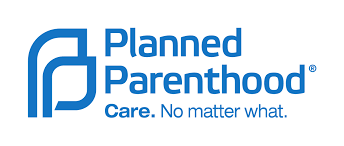
Swedish Daddies
Order Instructions:
Read Case 9.5: Swedish Daddies, located on page 351 of your textbook (attached PDF has case reference material).
Write a four to six (4-6) page paper in which you answer the following questions:
1. If you have, or plan to have, children, what sort of balance do you seek between career and
family life? Do you believe that the mindset of corporate America is conducive to the type of work
and family arrangement that would suit you?
2. Should the United States require companies to provide paid maternity leave? Should it assist
them to do so? What about paternity leave?
3. Should specialized organizational arrangements be made for workers who wish to combine
career and child raising? Suppose specialized organizational arrangements must be made for
such workers. Identify steps that companies can take to accommodate parental needs more
effectively.
4. Does a firm have an obligation to give employees the flexibility to work out the particular balance
of career and family that is right for them? Or does this go beyond the social responsibilities of
business?
5. Cite your textbook as a reference.
Your assignment must follow these formatting requirements:
• Be typed, double spaced, using Times New Roman font (size 12), with one-inch margins on all
sides; references must follow APA or school-specific format. Check with your professor for any
additional instructions.
• Include a cover page containing the title of the assignment, the student’s name, the professor’s
name, the course title, and the date. The cover page and the reference page are not included in
the required page length.
The specific course learning outcomes associated with this assignment are:
• Analyze the concepts of public safety and government regulation along with the role of business
responsibility.
• Recommend ways in which businesses can be partners with nature by applying the concepts of
business ethics, business ecology, and environmental ethics.
• Use technology and information resources to research issues in business ethics.
• Write clearly and concisely about business ethics using proper writing mechanics.
SAMPLE ANSWER
Swedish Daddies
Parents should balance their time between work and family. They should always ensure that they spend quality time with their families without using much of it accomplishing tasks at work. As much as income earned from work sustains the family, spending time with family members increases the love between parents and children. In the article, the author states in the article that most jobs offered for women have low income and require less time to accomplish a task. The author further states that employment opportunities that pay much money require worker to spend most of their time working to accomplish tasks. Married couples who plan to have children should seek to engage themselves in careers that do not work for late hours (Korabik, Lero & Whitehead, 2011). In addition, they should not settle for jobs that they work through evenings (Grzywacz & Demerouti, 2013). They can pick on a career that they work for eight hours then spend the rest of their time with their families.
Consequently, the love between the parents and the children bonds when they spend much time together. Through this practice, the children share numerous issues with their parents (Grzywacz & Demerouti, 2013). Children also tend to be free with their parents. Spouses should also not consider employment opportunities that require them to work over the weekends as this also denies their time with their families. Referring to the article, the author states that the mindset of corporate America is not conducive to the type of work and family (Grzywacz & Demerouti, 2013). Corporate America is also not conducive to the type of work and family because they are opposed to marital leave for working women. America does not guarantee women a paid maternity leave. Through this practice, America does not encourage women to consider giving birth since their employees do not receive their maternity leave allowance. America also offers less remuneration to jobs that women execute because of their flexibility and availability. Arguably, women do not get a chance to secure well paying jobs because they require employees to work for long hours.
Business organizations within United States should allow employed women paid maternity leave. Though this practice, women can constitute their family by giving birth to the number of children they desire. Paid maternity leave also allows women to cater for their needs during the time that they are attending to their newly born babies (Grzywacz & Demerouti, 2013). Allowing women maternity leave without allowances discourages them to give birth to children they desire. Women should be at liberty to give birth to the number of children they desire since this forms their families. Parental leave employee gain offered in most countries that grant paid time off work to care for a child or arrange for the welfare of the child (Korabik, Lero & Whitehead, 2011). Government institutions should stipulate a minimum benefit of parental leave in the law so that business organizations can practice its implementation (Korabik, Lero & Whitehead, 2011). Parental leave law in return benefits parents and their children. Paid parental leave to married couples should also be available as legal rights.
The interests of the children should be a collective responsibility between the parents to raise their children successfully (Korabik, Lero & Whitehead, 2011). Consequently, the three types of childcare policies include parental leave policy, childcare policy and early childhood benefits. Parental leave policies assist employed parents prior to giving birth to stay at home for a period so that they can take care of the child. A paternity leave is important to households since married men assist their women to carry out their daily duties during the maternity leave. Paternal leave also increases the bond between a woman and a newly born child. Paternal leave is also important for men since it allows them to have a long break with their families (Korabik, Lero & Whitehead, 2011). Childcare policies enable parents receive assistance in non-parental care for the child by subsidizing the type of care parents select. In addition, childcare programs serve both working and non-working parents. In addition, early childhood benefits support parents in their everyday care of their child. The benefits parents receive in return are cash grants used to cover the costs of caring for an infant.
Formation of specialized organizations for workers who wish to combine career and to raise their children is of necessity because it encourages family members to spend more time with their families. Specialized organizations allow men and women flexible time to execute their duties (Grzywacz & Demerouti, 2013). These organizations also pay adequate allowances to their staff members to enable them cater for their families. Consequently, family members can interact with each other and can share many issues amongst themselves. A specialized organization will allow its workers maternal leave that further encourages married couples to form their families and raise the number of children they desire to during their marriage (Korabik, Lero & Whitehead, 2011). Paternity leave is also of necessity since men offer their assistance during the maternity leave (Grzywacz & Demerouti, 2013). In the article, the author states that business organizations in Sweden are allowing women employees up to sixteen months paid maternal leave per child. Through this practice, women can give birth without worrying how they will sustain their newly born children (Korabik, Lero & Whitehead, 2011). In Sweden, business organizations allow men a two-month paternity leave that they use to support their families.
Arguable, business organizations in Sweden supports the practice of parents to spend most of their time with their families and children. Specialized organizations can take numerous steps to accommodate parental needs more effectively (Grzywacz & Demerouti, 2013). These steps include allowing parents to work within the normal eight hours per day. Through this practice, parents can spend time with their families, which further culminate to love among them. Through this practice, families are also able to perform numerous duties together at home. Specialized organizations should not operate through the weekends as this also denies families time together. Consequently, specialized organizations should offer their staff salaries that can sustain both their basic needs and those of their families. Arguably, a sustainable salary for employees enables them to perform their duties well and deliver positive output compared to earning a low salary.
Business organizations are not obliged to give employees the flexibility to work out the particular balance between career and family. Business organizations should embrace practices that value their employees. Business ethics requires that business organizations engage in activities that enhance sustainability of the business. Business ethics is a professional applied ethics that examines ethical principles and moral or ethical predicaments that arise in a business environment (Korabik, Lero & Whitehead, 2011). Business ethics concerns all aspects of business conduct and is applicable to the behavior of individuals and entire organizations. The main aim of for-profit business organizations is to maximize their profits with the available resources within the market. Business ethics contributes to the reputation of the organization positively (Korabik, Lero & Whitehead, 2011). In addition, business ethics also assists the company to communicate its expectations to its staff members, to suppliers, vendors and customers.
It is necessary that business institutions giving their employees the flexibility of work because it enables them to perform their duties without much stress. Ethical business practices also create a positive working environment within the market and enable the organization avoids legal problems (Korabik, Lero & Whitehead, 2011). Arguably, giving employees the flexibility to work out the particular balance of career and family goes beyond the social responsibilities of the business. Consequently, the business will have a positive reputation within the market. Through this practice, the business can increase its market share and maintain its sustainability within the market. The business also creates a good rapport with its staff members (Korabik, Lero & Whitehead, 2011). Through this practice, staff members of the business can raise issues concerning them and the organization at large. A good rapport with the business also fosters a good relationship between the staff members and the management of the organization (Korabik, Lero & Whitehead, 2011). Even so, staff members can assist the management run the business by giving out crucial information that may be of use and support to the business organization.
References
Korabik, K., Lero, D. & Whitehead, D. (2011). Handbook of Work-Family Integration: Research, Theory, and Best Practices. Amsterdam: Academic Press.
We can write this or a similar paper for you! Simply fill the order form!






